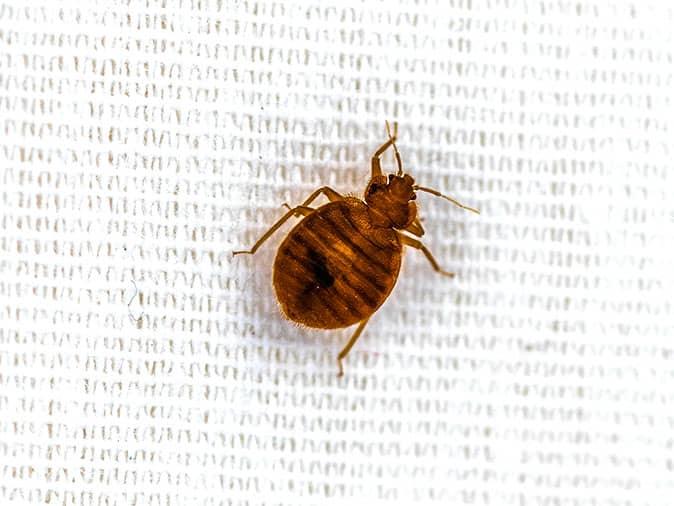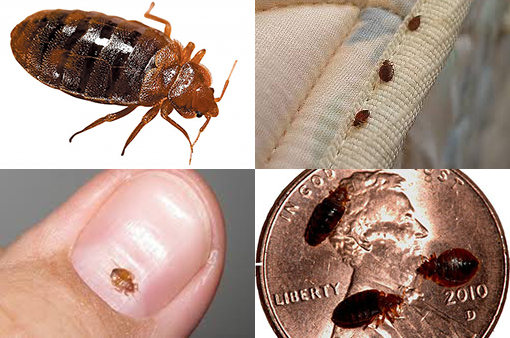Bed Bug Eggs Removal: Expert Solutions to Prevent Reinfestation
Bed Bug Eggs Removal: Expert Solutions to Prevent Reinfestation
Blog Article
Obtain Informed About the Types of Bug Control Approaches and Their Benefits for Property Owners
Comprehending the different bug control methods offered to property owners is necessary for effective insect monitoring. From chemical and biological methods to cultural and mechanical techniques, each approach offers unique benefits that can dramatically impact both health and ecological safety and security. Property owners that are educated can make strategic options that not only address parasite concerns however likewise boost the overall quality of their living atmosphere. As we explore these methods better, it ends up being clear that the decision-making process involves even more than just prompt results; it touches on lasting sustainability and wellness. What aspects should influence these crucial choices?
Chemical Bug Control Techniques
Chemical pest control techniques are a critical component of integrated parasite administration methods for home owners seeking effective services to pest invasions. These methods include the application of chemical materials created to eliminate or deter insects that endanger personal effects, wellness, and comfort. Common chemicals used consist of insecticides, rodenticides, fungicides, and herbicides, each tailored to target specific bugs.
The primary benefit of chemical insect control is its quick effectiveness; several formulas supply instant outcomes, lowering pest populaces considerably in a brief time. Furthermore, developments in chemical formulas have brought about items that are a lot more eco-friendly and have lower toxicity degrees for non-target organisms when used properly.

Organic Parasite Control Methods
All-natural insect control approaches have gotten prestige as house owners look for more secure and a lot more sustainable options to conventional chemical methods. Organic insect control methods utilize natural killers, parasites, or microorganisms to handle parasite populations successfully. This method is not only environmentally pleasant yet also lessens the threat of injury to non-target varieties, including beneficial bugs and wildlife.
Among one of the most usual organic control techniques includes introducing all-natural predators right into the atmosphere. Ladybugs can be utilized to regulate aphid populations, while nematodes target soil-dwelling bugs like grubs. In addition, parasitoids-- microorganisms that reside on or within a host-- can be used to regulate particular pest species by laying eggs inside them, inevitably resulting in their death.
One more method is using biopesticides, which are derived from natural materials such as plants, germs, or minerals (bed bug exterminator). These items can efficiently target parasites while posturing marginal threat to pets and people. Overall, organic pest control methods supply home owners with an effective ways of insect monitoring that lines up with ecological concepts, advertising a much healthier living atmosphere while minimizing reliance on artificial chemicals
Mechanical Bug Control Techniques
Mechanical insect control approaches incorporate a variety of methods that physically avoid or get rid of bugs without making use of chemicals. These methods are especially helpful for property owners looking for environmentally friendly alternatives while making certain the safety and security of their home.
One typical approach is making use of obstacles, such as nets, displays, and catches, which prevent bugs from entering homes or certain locations. Mounting home window displays can properly maintain pests out, while utilizing physical barriers around gardens can hinder bigger pests like deer or bunnies. Furthermore, mechanical catches created for rodents can catch and remove these pests without the need for hazardous compounds.
One more reliable technique entails the usage of vacuum cleaners and brooms to eliminate bugs straight from surface areas. Regular cleansing and upkeep can substantially decrease bug populaces by removing food resources and hiding areas. Employing gadgets like ultrasonic pest repellents can discourage different bugs via audio waves that are unpleasant to them but faint to humans.
Social Parasite Control Practices
Cultural insect control methods focus on modifying the environment and administration strategies to develop conditions that are much less favorable to pest infestations. These techniques are basic in maintaining a well balanced ecological community and reducing the reliance on chemical interventions. By altering agricultural techniques, property owners can efficiently prevent parasites while advertising plant wellness.
One common approach includes crop turning, which disrupts the life cycles of pests by changing the sorts of plants expanded in a certain location (bed bug exterminator). This not just reduces pest populaces yet additionally enhances soil wellness. Additionally, intercropping-- growing varied useful site crops in proximity-- can confuse bugs and minimize their ability to find their preferred host plants
Water management is another vital facet of cultural techniques. Appropriate watering methods can prevent standing water, which offers as a reproduction ground for mosquitoes and various other insects. In addition, keeping sanitation around the home, such as routinely removing debris and food waste, bird pest control can significantly minimize pest attraction.
Including these social practices right into a thorough pest administration method permits house owners to create a setting that naturally discourages pests, therefore boosting the effectiveness of various other control methods while advertising lasting horticulture and landscaping.

Integrated Parasite Administration Approaches
Integrated Bug Administration (IPM) represents an all natural approach that incorporates different methods to properly take care of bug populaces while decreasing environmental impact. This methodology integrates biological, social, physical, and chemical practices to accomplish sustainable pest control. By assessing pest populations and their natural enemies, IPM stresses monitoring and recognizing pests prior to carrying out control measures.
Among the core concepts of IPM is using limits, which establish the degree of insect task that calls for intervention. This ensures that therapies are used only when required, minimizing the reliance on chemical pesticides. Organic control methods, such as introducing all-natural predators or bloodsuckers, operate in conjunction with social practices like crop rotation and habitat adjustment to interrupt pest life cycles.
Furthermore, IPM motivates the usage of least-toxic chemical alternatives when treatment is necessary, focusing on products that read pose marginal risk to non-target microorganisms and the atmosphere. For homeowners, embracing IPM comes close to not only enhances the efficacy of pest administration however also advertises a much healthier living environment, fostering biodiversity and minimizing chemical direct exposure. Eventually, IPM equips home owners to make enlightened decisions that balance insect control with eco-friendly duty.
Verdict
In conclusion, recognizing the numerous pest control techniques equips home owners to make enlightened decisions pertaining to pest monitoring. Each method-- chemical, organic, mechanical, social, and incorporated bug management-- offers distinct benefits that cater to various demands and preferences.
Understanding the various parasite control techniques available to homeowners is essential for reliable insect administration.Chemical bug control techniques are a vital component of integrated bug administration approaches for home owners seeking effective solutions to pest invasions. In general, biological pest control methods supply house owners with a reliable means of parasite monitoring that straightens with environmental principles, promoting a healthier living setting while decreasing dependence on synthetic chemicals.
Cultural bug control techniques concentrate on customizing the environment and administration strategies to develop problems that are much less helpful to pest problems.In conclusion, comprehending the different pest control approaches equips homeowners to make informed decisions regarding pest administration.
Report this page